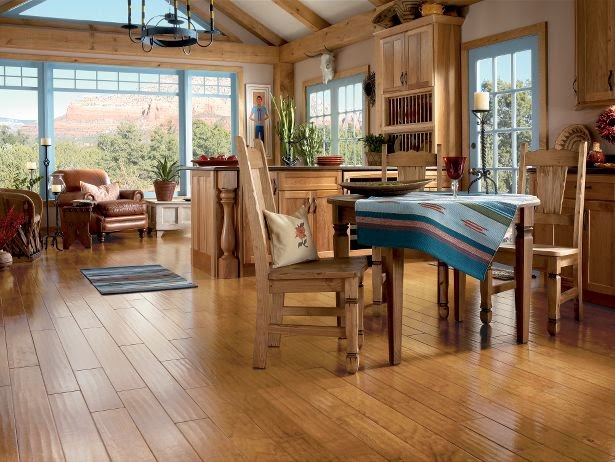Wood and affordable healthy homes at scale

|
Contents |
[edit] Introduction
For architecture and construction, new building standards and product certification are helping push health and wellbeing into the commercial sector as the biophilic office proves a return on investment. What is lacking though are examples of this approach working in the mainstream residential sector. Where there are examples, they are mostly one-off private homes or in the premium build-to-rent sector. So, the crucial question is: can we build affordable healthy homes at scale?
[edit] Meeting the WELL standard
Recognising the need for healthy homes is not a new issue. The Wellcome Collection recently hosted an exhibition about Living with Buildings with a focus on health and architecture. The exhibition showcased examples of 19th century slum housing and the initiatives that followed to improve housing and occupant health. Poor ventilation was a huge issue at the time and continues to be so now.
But our thinking around what makes a healthy building has progressed and Edward Murphy reminds us of the World Health Organisation’s (WHO) definition of health: “a state of complete physical, mental and social wellbeing.” This is what a building’s design needs to accommodate.
Murphy looks to the WELL Standard for guidance. For those unfamiliar with the WELL Standard, it focuses on eight key features: air, water, nourishment, light, fitness, comfort, mind and innovation. A building is registered to meet the WELL Standard and assessed on set criteria. If it meets the standard, it is awarded certification from bronze through to platinum level.
Commenting on where the UK is currently in its approach to healthy buildings, Murphy said: “Wellness is not just physical, it is mental and psychological. The demand for health-preserving buildings is here and it is growing.”
[edit] Raising the standards
One initiative that is attempting to address this issue is the Healthy New Towns (HNT) programme. Established by NHS England, a healthy new town encourages architects and planners to incorporate health and wellbeing into the design of homes and beyond into the community. NHS England, through HNT, is proposing a Quality Mark for homes and neighbourhoods.
Kevin McGeough, who leads on the Ebbsfleet Healthy New Town Programme which has been piloting the concept, explained that a version has developed with the working title ‘HomesPlus’. At the moment it is a proposed benchmark for quality homes and neighbourhoods which will feed into and help shape the national proposal, but as yet isn’t a reality.
While the discussion around the UK housing crisis has been dominated by the quantity of new homes, the government’s recently re-invigorated call for design quality may give rise to new hope for better homes in the future.
Better homes means future-proofing homes. Older people are living longer, and homes need to be more flexible and adaptable to better meet the needs of people throughout their life, particularly downsizers. This was the aim of the University of Sheffield design research project, DWELL (Designing for Wellbeing in Environments for Later Life).
Sarah Wigglesworth and the research team developed their own criteria to understand wellbeing in movement, sound, materials and community. Using these principles, they developed a layout for a multi-generational neighbourhood offering dwellers opportunities for informal social encounters in the rituals of everyday life, contact with the natural world and accessible public services.
Sharing her conclusions from the project, Sarah said: “We know how to design great housing and what will support longevity, autonomy and wellbeing. We need the housing suppliers to respond with new models of housing to support adequate quality of life."
She also showcased some modular housing prototypes created for the Home Group made from cross-laminated timber (CLT), a building material known for its adaptability, health benefits and carbon sequestering ability. It is also a quicker way to build, often saving costs on site, with fewer defects and with less reliance on skilled workers. Similar benefits can be achieved using prefabricated timber frame or Structural Insulated Panels (SIPS).
Sarah said: “We need to design for the long term. This is important for climate-change impact, and we need to build community cohesion through attention to the broader issues of planning, location and access to services. Housing should consider everyone’s needs as people, not simply offer a niche product that works as a business model. Our findings around the ageing population show that what works for older people works for everyone.”
[edit] Making it affordable
NHS Healthy Towns and projects like DWELL show healthy homes can be delivered at scale, but how can we achieve greater affordability?
For Miranda Plowden, this is her key concern at the South Yorkshire Housing Association. Housing associations want to achieve higher standards, particularly to support their customers’ health and wellbeing. But land prices and low property values make it difficult to make quality housing commercially viable. Providing quality social housing is reliant on grants and these have been cut in recent years, so housing associations struggle to provide the homes they want their clients to live and thrive in.
Both Miranda and Kevin McGeough agreed that offsite construction can play a key role in delivering sustainable homes. Kevin commented: “We developed modern method of construction solutions ten years ago, we just never built them. It is not new, we just need to get started.”
Offsite solutions such as timber frame and CLT have been used for affordable homes at scale. But the health benefits these projects deliver are usually a bonus rather than an intention. Referring to the WELL Standard, they create a healthier living environment through improved indoor air quality and increased thermal comfort (which also reduces energy bills – essential for those needing affordable housing). They also fulfil some of DWELL’s additional features since CLT has low Volatile Organic Compounds (VOCs) and is a natural renewable building material, locking in carbon.
So, there are solutions available for this complicated problem, but the only way to create a level playing field is for MPs and built environment professionals to lobby for building regulations that set requirements for healthy homes. This would make healthy homes accessible to all.
[edit] Related articles on Designing Buildings Wiki
- 5 things leaders can do to create a truly circular economy.
- A social, circular economy.
- BREEAM Construction waste management.
- Building Revolutions - review.
- Circular economy - transforming the worlds number one consumer of raw materials.
- Construction waste.
- Cradle to cradle product registry system.
- Deconstruction.
- Design for deconstruction.
- End of life potential.
- Green supply chain management.
- Life cycle.
- Mean lean green.
- Recyclable construction materials.
- Recycling.
- Reduce, reuse, recycle.
- Renewable energy.
- Sustainable materials.
- Sustainability.
- Waste management plan.
[edit] External references
- British Woodworking Federation feasibility study
- C2C Certified
- Circularity Gap Report for 2019,
- Cradle to Cradle Certified (C2C Certified)
- Cradle to Cradle Marketplace
- Green Building Council (UKGBC) practical guidance
- Product Innovation Award.
- --Wood for Good
Featured articles and news
Latest Build UK Building Safety Regime explainer published
Key elements in one short, now updated document.
UKGBC launch the UK Climate Resilience Roadmap
First guidance of its kind on direct climate impacts for the built environment and how it can adapt.
CLC Health, Safety and Wellbeing Strategy 2025
Launched by the Minister for Industry to look at fatalities on site, improving mental health and other issues.
One of the most impressive Victorian architects. Book review.
Common Assessment Standard now with building safety
New CAS update now includes mandatory building safety questions.
RTPI leader to become new CIOB Chief Executive Officer
Dr Victoria Hills MRTPI, FICE to take over after Caroline Gumble’s departure.
Social and affordable housing, a long term plan for delivery
The “Delivering a Decade of Renewal for Social and Affordable Housing” strategy sets out future path.
A change to adoptive architecture
Effects of global weather warming on architectural detailing, material choice and human interaction.
The proposed publicly owned and backed subsidiary of Homes England, to facilitate new homes.
How big is the problem and what can we do to mitigate the effects?
Overheating guidance and tools for building designers
A number of cool guides to help with the heat.
The UK's Modern Industrial Strategy: A 10 year plan
Previous consultation criticism, current key elements and general support with some persisting reservations.
Building Safety Regulator reforms
New roles, new staff and a new fast track service pave the way for a single construction regulator.
Architectural Technologist CPDs and Communications
CIAT CPD… and how you can do it!
Cooling centres and cool spaces
Managing extreme heat in cities by directing the public to places for heat stress relief and water sources.
Winter gardens: A brief history and warm variations
Extending the season with glass in different forms and terms.
Restoring Great Yarmouth's Winter Gardens
Transforming one of the least sustainable constructions imaginable.























